 The DeMarco Family has been the leading patented innovator in industrial vacuum technology since 1968, but it wasn’t until recently that the vacuum line’s name reflected its inventor, Thomas DeMarco Sr. The current DEMARCO® Vacuum Line is the third generation of industrial vacuums from the DeMarco Family. Each generation of vacuums improved the wet/dry material collection process as the company has always been dedicated to providing their customers with high performance and superior quality products.
The DeMarco Family has been the leading patented innovator in industrial vacuum technology since 1968, but it wasn’t until recently that the vacuum line’s name reflected its inventor, Thomas DeMarco Sr. The current DEMARCO® Vacuum Line is the third generation of industrial vacuums from the DeMarco Family. Each generation of vacuums improved the wet/dry material collection process as the company has always been dedicated to providing their customers with high performance and superior quality products.
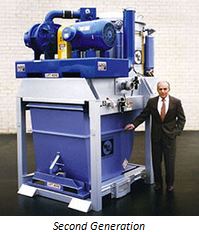 MAX VAC® was the second generation of industrial vacuums from the DeMarco Family. The line was launched in 1986 and revolutionized the vacuum industry with the addition of the Patented DEMARCO® 3-Stage, 2-Compartment Laterally Offset Cyclonic Material Separator Circuit and DEMARCO® Silencer Base® Muffler. The vacuums also implemented the pleated cartridge filter technology for the first time in the industry, an additional feature that enhanced the vacuum’s overall performance and simplicity of design. Overnight, the bag-type vacuum filter became obsolete.
MAX VAC® was the second generation of industrial vacuums from the DeMarco Family. The line was launched in 1986 and revolutionized the vacuum industry with the addition of the Patented DEMARCO® 3-Stage, 2-Compartment Laterally Offset Cyclonic Material Separator Circuit and DEMARCO® Silencer Base® Muffler. The vacuums also implemented the pleated cartridge filter technology for the first time in the industry, an additional feature that enhanced the vacuum’s overall performance and simplicity of design. Overnight, the bag-type vacuum filter became obsolete.
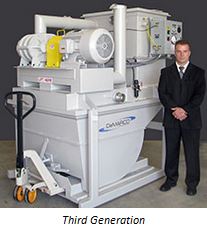 Committing to his father’s innovative spirit, Thomas DeMarco Jr., President and Senior Engineer, improved and enhanced their industrial vacuum line again in 2010. This latest design has more advanced performance features including greater filter efficiency and improved filter air-to-cloth ratio, as well as a new aesthetic low-profile and exclusive compact design. In addition to these new developments, the line was also renamed DEMARCO®. The new vacuum name honors the company’s founder, Thomas DeMarco Sr., the industry pioneer who dedicated his life to the continual improvement of vacuum system technology.
Committing to his father’s innovative spirit, Thomas DeMarco Jr., President and Senior Engineer, improved and enhanced their industrial vacuum line again in 2010. This latest design has more advanced performance features including greater filter efficiency and improved filter air-to-cloth ratio, as well as a new aesthetic low-profile and exclusive compact design. In addition to these new developments, the line was also renamed DEMARCO®. The new vacuum name honors the company’s founder, Thomas DeMarco Sr., the industry pioneer who dedicated his life to the continual improvement of vacuum system technology.
Today, the DeMarco Family, now in its third generation of vacuum engineers, continues to be the innovative leader in the development of superior vacuum designs worldwide.
The DEMARCO® Vacuum can also be customized to work in a wide variety of material collection applications. To learn more, visit the Technology and Performance page today. DEMARCO® – Vacuums Built for Industry™
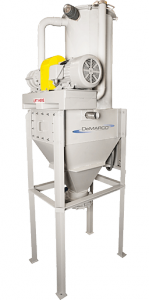 Did you know that for more than 45 years, DEMARCO Vacuums has been a groundbreaking pioneer in the field of advanced vacuuming technology? It’s true.
Did you know that for more than 45 years, DEMARCO Vacuums has been a groundbreaking pioneer in the field of advanced vacuuming technology? It’s true. Risk, unpredictability and even failure are unavoidable in the process of innovation. In fact, a key part of the innovation process is the ability to experiment, process failures, learn from them and turn them into beneficial experiences.
Risk, unpredictability and even failure are unavoidable in the process of innovation. In fact, a key part of the innovation process is the ability to experiment, process failures, learn from them and turn them into beneficial experiences. One of the worst-case scenarios for a business owner is an industrial accident causing property damage or personal injury to workers. One possibility could be an industrial accident caused by combustible dust, or tiny airborne particulates that can suddenly explode under the particular circumstances.
One of the worst-case scenarios for a business owner is an industrial accident causing property damage or personal injury to workers. One possibility could be an industrial accident caused by combustible dust, or tiny airborne particulates that can suddenly explode under the particular circumstances. Innovation is fast becoming a top strategic priority for a majority of companies today. While the notion that innovation drives prosperity is not new, it’s important to remember that innovation should not be considered an end in itself but rather an ongoing process that adds continuous value.
Innovation is fast becoming a top strategic priority for a majority of companies today. While the notion that innovation drives prosperity is not new, it’s important to remember that innovation should not be considered an end in itself but rather an ongoing process that adds continuous value. DeMarco Industrial Vacuums like many other manufacturers have a long history of making revolutionary advancements in products and processes to improve efficiency, quality and safety. In an effort to showcase innovation in manufacturing, over the coming year, we will be highlighting companies that are making strides to increase innovation, quality, and productivity.
DeMarco Industrial Vacuums like many other manufacturers have a long history of making revolutionary advancements in products and processes to improve efficiency, quality and safety. In an effort to showcase innovation in manufacturing, over the coming year, we will be highlighting companies that are making strides to increase innovation, quality, and productivity. The Rolls-Royce@NTU Corporate Lab is located at Singapore’s
The Rolls-Royce@NTU Corporate Lab is located at Singapore’s 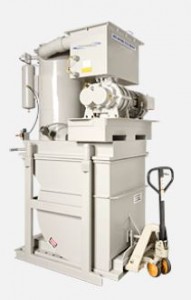 At DeMarco, we understand the importance of purchase options. We realize that, even as the economy continues to recover, limited resources are still causing many sourcing professionals to do more with less. We also believe an industrial vacuum is a sound investment, helping to ensure a safe workplace and a prosperous and efficient business.
At DeMarco, we understand the importance of purchase options. We realize that, even as the economy continues to recover, limited resources are still causing many sourcing professionals to do more with less. We also believe an industrial vacuum is a sound investment, helping to ensure a safe workplace and a prosperous and efficient business.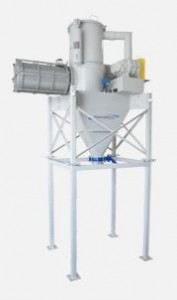 With our “remanufactured” option, DeMarco Industrial Vacuum Corporation will rebuild any DEMARCO industrial vacuum to “Like New” condition at affordable pricing. All remanufactured vacuums come with our 2-year DEMARCO Rebuild Warranty.
With our “remanufactured” option, DeMarco Industrial Vacuum Corporation will rebuild any DEMARCO industrial vacuum to “Like New” condition at affordable pricing. All remanufactured vacuums come with our 2-year DEMARCO Rebuild Warranty. The future can be unpredictable, particularly where business processes and disruptive technologies collide. In a recent series of 30 interviews with CIOs and chief innovation officers from such enterprises as Dell, SAP and AT&T, all respondents said they felt they are facing “once-in-a-lifetime change” and that “the changes would continue at pace.”
The future can be unpredictable, particularly where business processes and disruptive technologies collide. In a recent series of 30 interviews with CIOs and chief innovation officers from such enterprises as Dell, SAP and AT&T, all respondents said they felt they are facing “once-in-a-lifetime change” and that “the changes would continue at pace.” After analyzing the mineral components of a concrete breakwater sample dating back to 37 B.C., researchers have discovered that the secret to superior Roman concrete – one of the world’s most durable construction materials – lies in its unique mineral formulation and production technique.
After analyzing the mineral components of a concrete breakwater sample dating back to 37 B.C., researchers have discovered that the secret to superior Roman concrete – one of the world’s most durable construction materials – lies in its unique mineral formulation and production technique. Today’s concrete and the one that’s been in use for nearly 200 years, doesn’t utilize the Roman mixture of lime-and-ash that made their formula a unique and stable binder.
Today’s concrete and the one that’s been in use for nearly 200 years, doesn’t utilize the Roman mixture of lime-and-ash that made their formula a unique and stable binder.